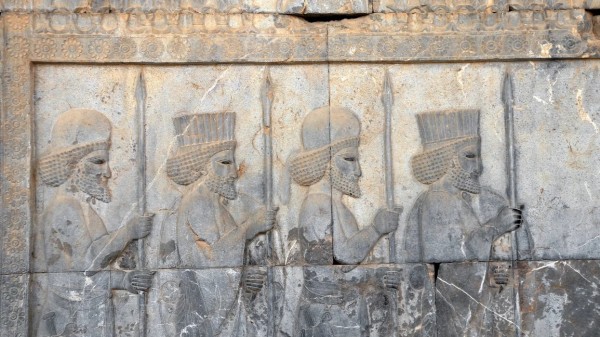
frentusha via Getty Images
Ishtartv.com -
theblaze.com
Paul Sacca, June 23, 2024
An archaeological discovery has seemingly corroborated an epic battle
that took place some 2,700 years ago and is documented in the Bible.
King Sennacherib's Assyrian troops attempted a siege of Jerusalem
approximately 2,700 years ago. King Hezekiah of Judah allegedly prayed for a
miracle to save the city from being captured.
As per the Bible, an "angel of the Lord" descended on the
invading Assyrian troops attempting to besiege Jerusalem. The "angel of
the Lord" allegedly "struck down" 185,000 Assyrian soldiers in a
single night. Sennacherib – the king of Assyria – realized the devastation and
was forced into a military retreat. The "angel of the Lord" allegedly
prevented an Assyrian conquest of Jerusalem, according to accounts detailed in
2 Kings 19:35 and Isaiah 37:36.
2 Kings 19:35:
"And it came to pass that night, that the angel of the Lord went
out and smote in the camp of the Assyrians a hundred fourscore and five
thousand; and when they arose early in the morning, behold, they were all dead
corpses."
Historical records do indicate that there was an attempted Assyrian
siege of Jerusalem in 701 B.C. However, Sennacherib's Annals claim that
Assyrian troops returned to Assyria after receiving tribute from King Hezekiah.
He was purportedly allowed to stay in power as a vassal of the Neo-Assyrian
Empire – which included present-day Iraq, as well as parts of Iran, Turkey,
Syria, and Kuwait.
Archaeologists had previously discovered a scene carved into the stone
walls of King Sennacherib's palace, which displayed the Assyrian conquest of
Lachish – a city 42 miles south of Jerusalem. The carvings showed how the
Assyrian military bases were laid out.
Archaeologist Stephen Compton carefully examined these ancient
engravings to determine the locations of ancient military camps set up by King
Sennacherib in the Levant.
Compton wrote a peer-reviewed paper titled "The Trail of
Sennacherib’s Siege Camps," which was recently published in the journal Near
Eastern Archaeology. In the paper, Compton mapped out the likely locations for
the ancient Assyrian military camps, from around 700 B.C.
Compton utilized aerial photographs of Lachish from World War II,
landscape images, satellite imagery, onsite surveys, ancient pottery, and
archaeological data to create a virtual map of Sennacherib's camps.
After Sennacherib's invasion of Lachish, the ruins near the city were
abandoned for approximately 2,600 years. The ancient Arabic name for the ruins
was "Khirbet al Mudawwara," meaning "The Ruins of the Camp of
the Invading Ruler." Based on the discovery of pottery sherds from a
period of prehistory known as the Chalcolithic, Compton suspects that the ruins
were an Assyrian military camp used for the invasion and then abandoned after
the city was conquered.
There was similar ruins north of Jerusalem, which was on a hill that was
known in Arabic as "Jebel el Mudawwara," or "The Mountain of the
Camp of the Invading Ruler."
Some archaeologists believed the ruins were a Roman military camp built
by Titus during the later Roman invasion of Jerusalem. However, Compton noted
that Roman military camps were always rectangular, but Assyrian military camps
were an oval shape.
"We knew it was an oval. What I did was I took the image of the
relief and match it up with recognizable features in the landscape with the
actual landscape and overlayed the two," Compton told Fox News. "I
used earlier photographs of the landscape from World War II, right before major
changes were made. And it was a match."
Using the location of the military camps, Compton said that he had
determined the location of two lost ancient cities – Libnah and Nob, Both
cities were known to have been conquered by the Assyrians, but whose exact
locations were uncertain. Nob was described as a "city of priests"
near Jerusalem in 1 Samuel 22:19. Compton said Nob "held the tabernacle,
the holiest site in Judaism prior to the construction of the temple."
Compton – an independent scholar specializing in Near Eastern
archaeology – believes that the sites of the Assyrian military camps tell the
story of where Sennacherib's armies invaded and conquered. He concluded that
the discovery of the military camps proves that King Sennacherib's infamous
siege of Jerusalem did happen.
|